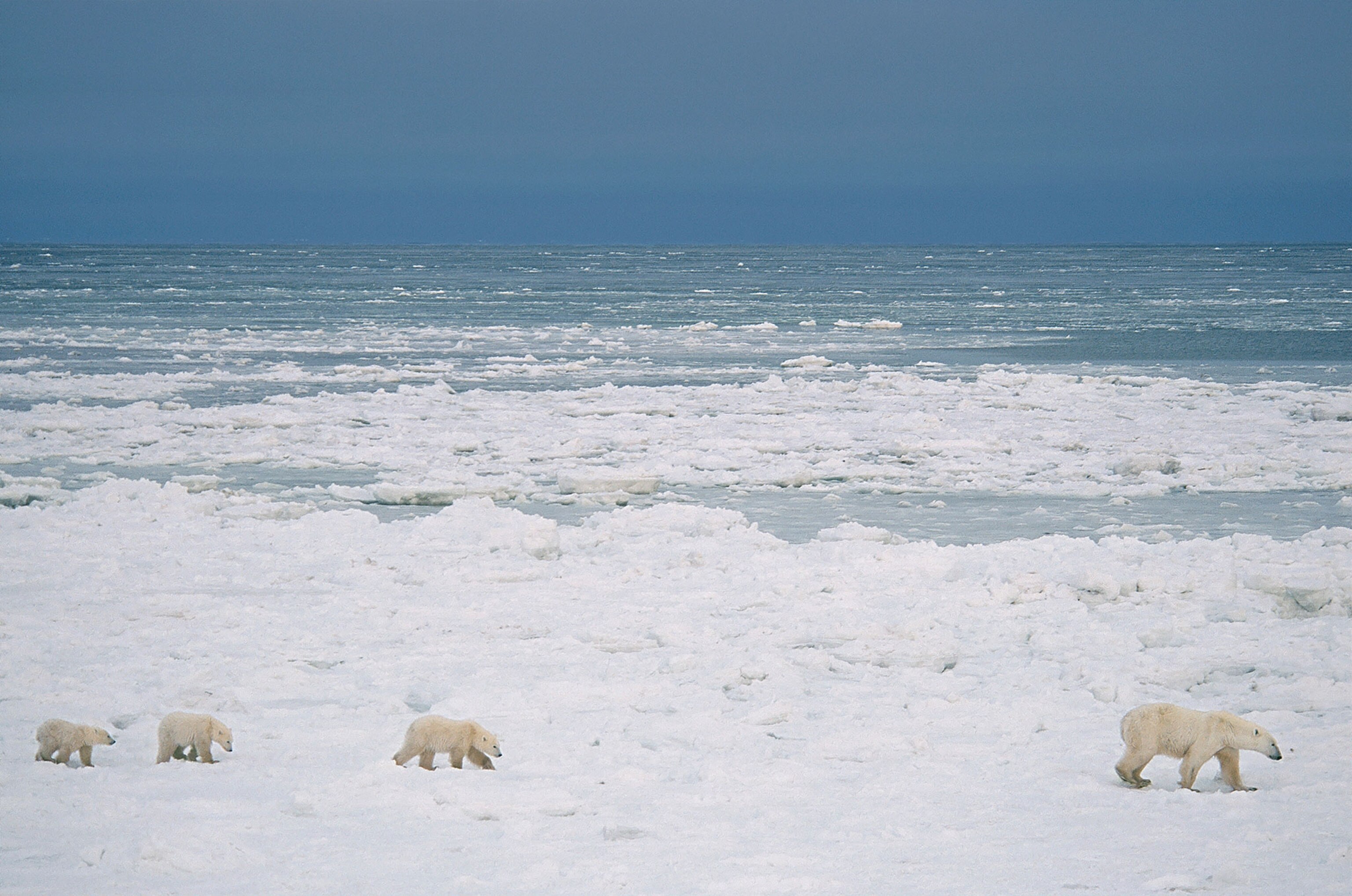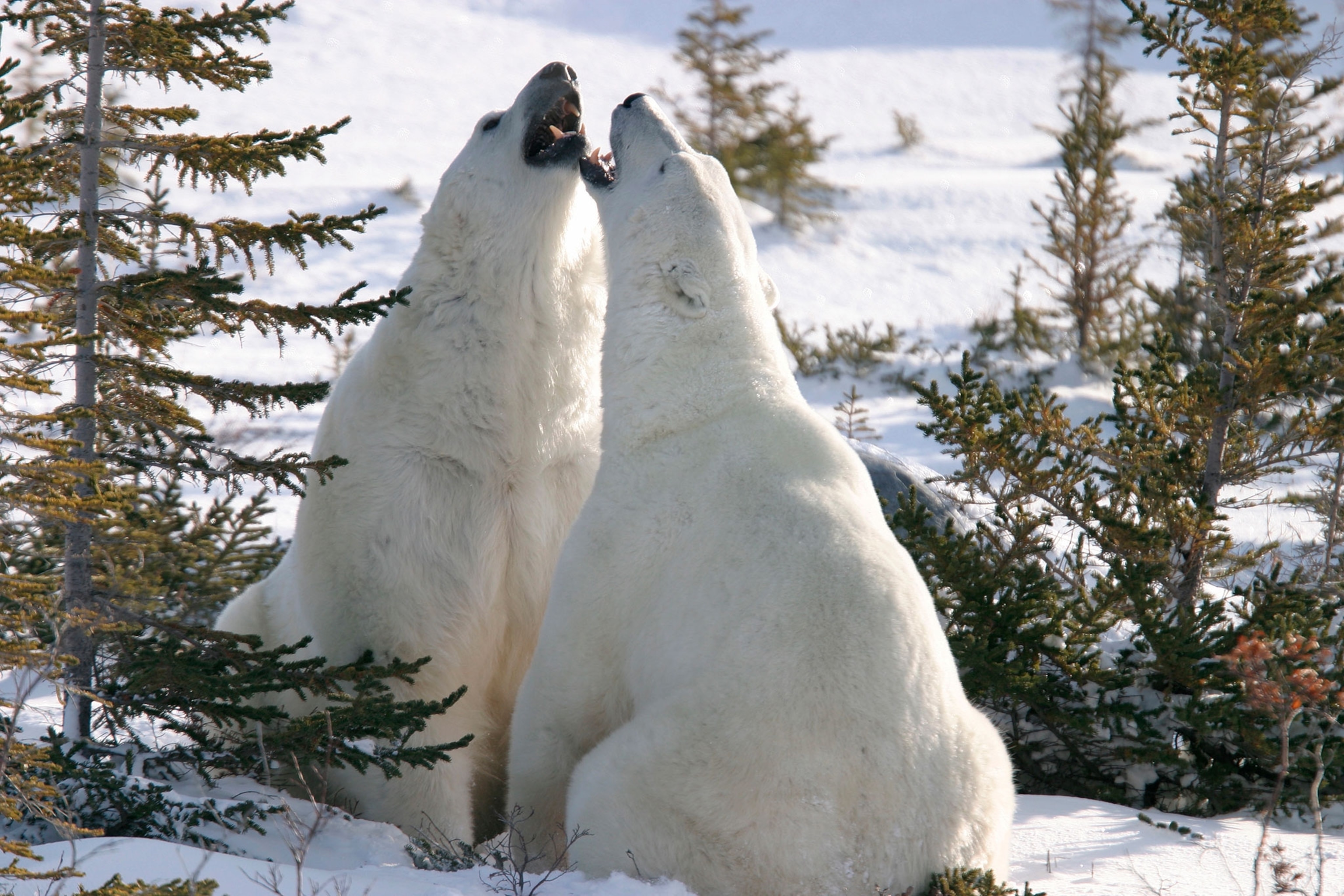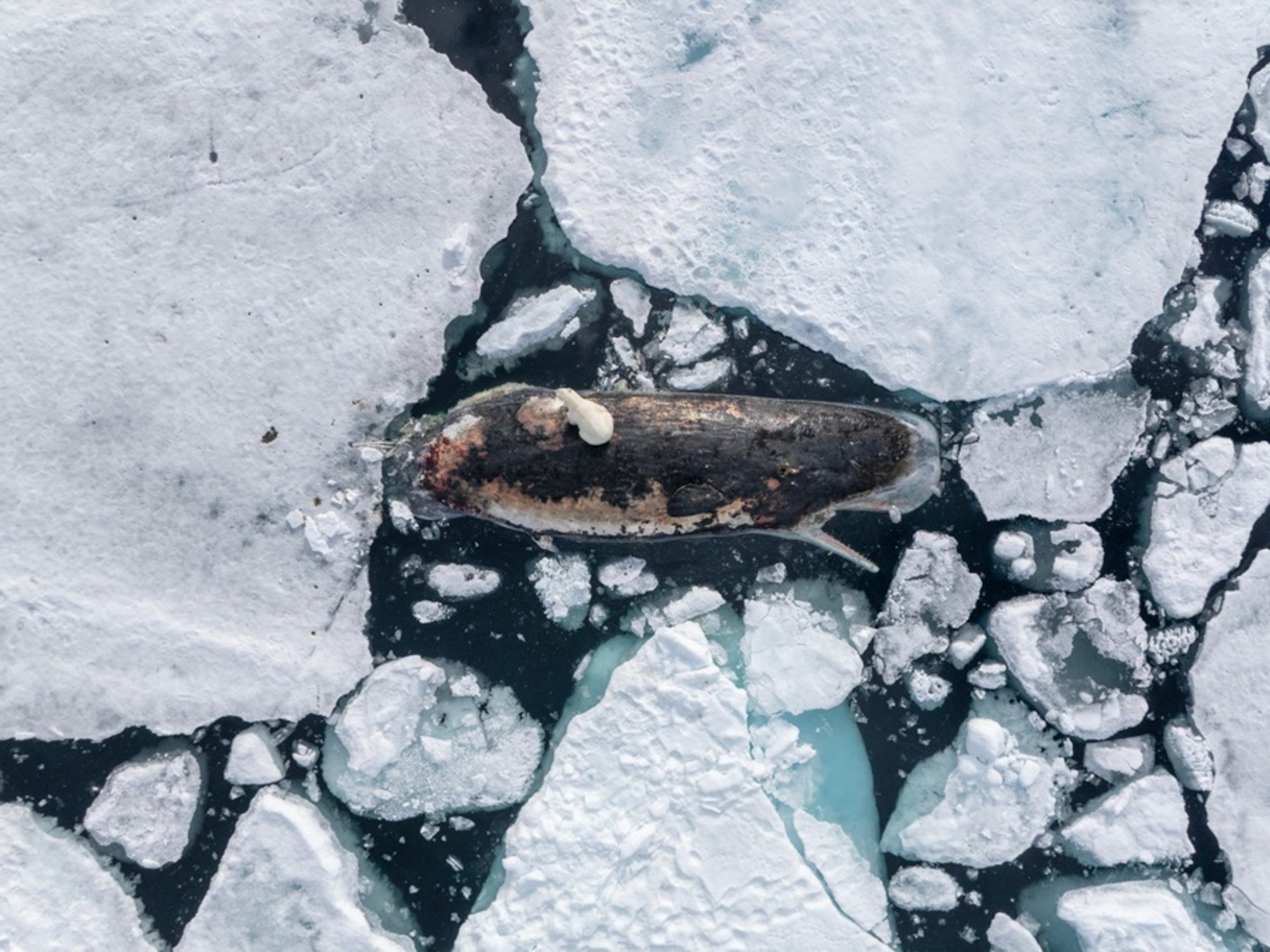
How to Experience Canada's Famous Polar Bear Party
The town of Churchill provides a perfect base camp for spotting the Arctic bears.
Every fall, hundreds of polar bears congregate along Canada’s Hudson Bay, near the town of Churchill, Manitoba, waiting for the water to freeze so they can get out on the ice and hunt seals.
Polar bears’ scientific name, Ursus maritimus, means sea bear, and they rely on sea ice for survival—using it to hunt, travel, and breed. Loss of sea ice due to climate change is threatening the species, and according to Polar Bears International, up to two-thirds of the bears could die by 2050, with none left in the wild by 2100.
Eager to get on the ice and find food as soon as possible, the bears wait near the bay in anticipation of the freeze. This gathering spot provides a great opportunity for wildlife watchers to take a peek at these majestic, fearsome, and enormous creatures.

Churchill: The Polar Bear Destination
Since the bears rely so heavily on sea ice, they spend most of their time in very sparsely inhabited regions, but fall provides a rare opportunity to see many polar bears in a relatively small area. The town of Churchill, in Manitoba, Canada, has around 900 residents and functions as a good adventure base camp with hotels, restaurants, and tours.
No roads reach Churchill, and train service was suspended indefinitely after flood damage to the tracks in early 2017, so flying is now the only feasible way to reach the town. Commercial and charter airlines serve the tiny airport, which features a huge polar bear safety sign warning visitors of the rules, including the obvious—never feed or approach the animals—and the less obvious: never walk at night after 10:00 p.m.
The airport sign also shares the ubiquitous Polar Bear Alert hotline, which is posted on signs and in hotel rooms throughout town. A 24-hour patrol team responds to calls reporting polar bears in or near town. Uncooperative bears may serve a stint in the Polar Bear Holding Facility, known colloquially as “polar bear jail,” before being released back into the wild.
Experience the Tundra
The best way to safely see polar bears up close is to sign up for a tour of the Churchill Wildlife Management Area. Specially equipped tundra vehicles, also known as tundra buggies or polar rovers, bring visitors out to see the animals, traveling along specific routes within the over 3,200-square-mile area alongside Hudson Bay.
- National Geographic Expeditions
These custom-built machines have huge tires that only exert four pounds of pressure per square inch to minimize damage to the fragile habitat. Elevated decks on the back of the vehicles sometimes feature grates that reveal intimate views of the occasional extra-curious bear wandering underneath sniffing at shoes. Arctic foxes, red foxes, snowy owls, and other critters can also be seen in the area. Mobile seasonal lodges let visitors spend the night out in prime polar bear territory, and helicopter tours along the bay are a way to gain an aerial perspective.

In Their Element
Witnessing polar bears in their natural habitat means watching the interactions between female bears, called sows, and their cubs-of-the-year (also called coy) as well as older cubs, referred to as yearlings. In the fall, male bears sometimes spend their time sparring with one another—rearing up on their hind legs, swatting at each other, and tumbling in the snow. Bears also spend their time digging through kelp on the shores, looking for bites to eat.
But, as much fun as they are to watch on the shore, as soon as the ice freezes, the polar bears disappear in search of seals to consume. These voracious eaters can ingest 100 pounds of seal blubber at one time, so they have plenty of hunting to do.

















